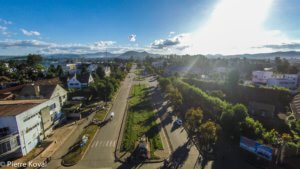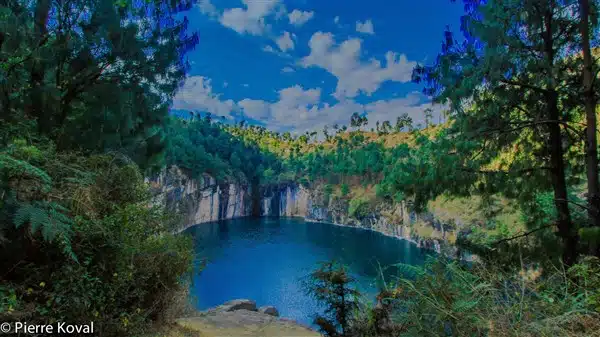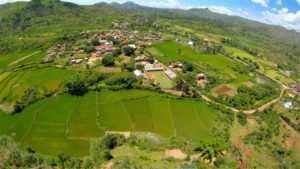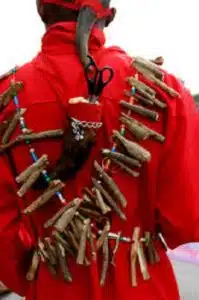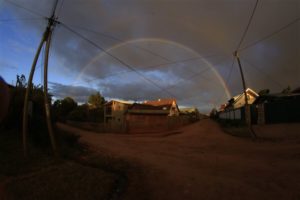
Discover Ambatolampy, a picturesque village located 68 km south of Antananarivo on the RN7. This village is crossed by a large path, once used by herds of Zebu, now frequented by 4x4s and mountain bikes, crossing the massif from east to west.
The route passes through Faratsiho, the highest city in Madagascar (1,792 m), over the Mahafompona Pass (2,386 m). From there, you can reach Antsirabe via the RN 43 and Sambaina, or through Vinaninony and Ambano (45 km of track through orchards).
MANJAKATOMPO Forest and Fish Farm Station
Just before Ankeniheny (7 km west of Ambatolampy), a road leads to the MANJAKATOMPO Forest and Fish Farm Station. Visit the Manjakatompo Forest and Fish Farming Station, accessible with permission from ANGAP (National Association for the Management of Protected Areas).
This preserved area of 1,000 ha, where efforts are being made to restore the Primary Forest of Ankaratra, offers pleasant hiking and camping opportunities, especially between March and June when everything is still green.
Although fishing and hunting are strictly prohibited, its waterfalls and rivers provide a pleasant coolness and you can swim in Lac aux Dames or Lac Froid. A Small hiking trail, south of the fish station, leads to the Mimosas Arboretum.
From the parking lot next to the orientation table (at an altitude of 2,111 m) and the Anosiarivo Arboretum, sports enthusiasts can reach the summit of Tsiafajavona (2,643 m) and its cairn in a few hours, at the foot of which the locals deposit offerings.
TSINJOARIVO (45 km southeast of Ambatolampy)
In this magnificent place, once densely wooded, overlooking the course of the Onive, Ranavalona had a holiday palace built in 1840.
East of the Rova (royal citadel), the Onive (150 m) flows in tumultuous waterfalls, the Andriamamovoka waterfalls, down the hill (150 m). Tsinjoarivo, the “thousand viewpoints”, is a sacred place where.
During the Malagasy New Year festival, processions are organized.
ANTSIRABE, “where there is plenty of salt” (167 km south of Antananarivo via the RN7)
Antsirabe, the Coquette, is located at an altitude of 1,550 m in a basin surrounded by the volcanic cones of 